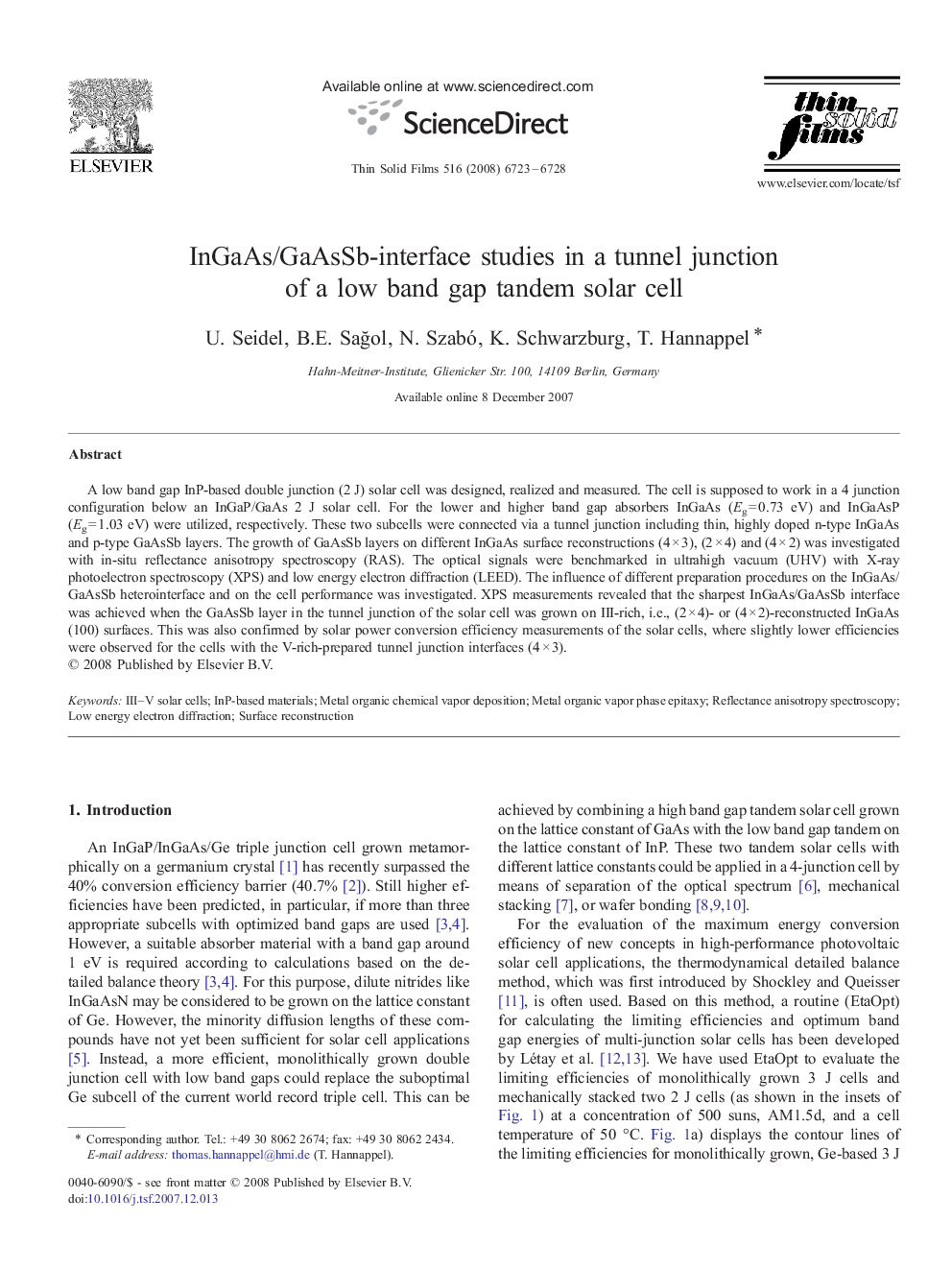| کد مقاله | کد نشریه | سال انتشار | مقاله انگلیسی | نسخه تمام متن |
|---|---|---|---|---|
| 1674405 | 1008964 | 2008 | 6 صفحه PDF | دانلود رایگان |

A low band gap InP-based double junction (2 J) solar cell was designed, realized and measured. The cell is supposed to work in a 4 junction configuration below an InGaP/GaAs 2 J solar cell. For the lower and higher band gap absorbers InGaAs (Eg = 0.73 eV) and InGaAsP (Eg = 1.03 eV) were utilized, respectively. These two subcells were connected via a tunnel junction including thin, highly doped n-type InGaAs and p-type GaAsSb layers. The growth of GaAsSb layers on different InGaAs surface reconstructions (4 × 3), (2 × 4) and (4 × 2) was investigated with in-situ reflectance anisotropy spectroscopy (RAS). The optical signals were benchmarked in ultrahigh vacuum (UHV) with X-ray photoelectron spectroscopy (XPS) and low energy electron diffraction (LEED). The influence of different preparation procedures on the InGaAs/GaAsSb heterointerface and on the cell performance was investigated. XPS measurements revealed that the sharpest InGaAs/GaAsSb interface was achieved when the GaAsSb layer in the tunnel junction of the solar cell was grown on III-rich, i.e., (2 × 4)- or (4 × 2)-reconstructed InGaAs(100) surfaces. This was also confirmed by solar power conversion efficiency measurements of the solar cells, where slightly lower efficiencies were observed for the cells with the V-rich-prepared tunnel junction interfaces (4 × 3).
Journal: Thin Solid Films - Volume 516, Issue 20, 30 August 2008, Pages 6723–6728